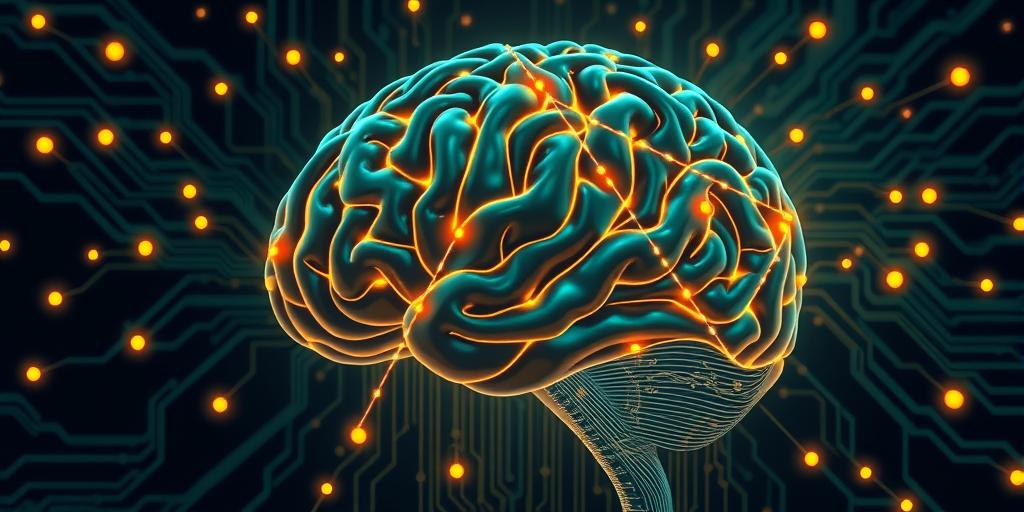Have you ever felt that unsettling unease when a machine’s cold logic clashes with your gut feeling? The rise of artificial intelligence (AI) has brought us incredible advancements, but it also presents us with a critical question: how do we balance the power of human intuition with the ever-growing capabilities of machine intelligence? It’s a delicate dance between the warmth of human experience and the raw power of data-driven algorithms, a dilemma that impacts everything from healthcare decisions to financial markets. Let’s delve into this fascinating and increasingly important topic.
The Uniquely Human Touch: Why Intuition Matters
Human intuition, that inexplicable gut feeling, is often born from years of accumulated experience, subtle observation, and subconscious pattern recognition. It’s the flash of insight that allows a seasoned doctor to diagnose a rare condition, the creative spark that leads an artist to create a masterpiece, or the instinctive move that wins a game. While we may not always understand the exact process, intuition’s contribution to decision-making is undeniable. Ignoring this critical element in favor of purely data-driven approaches could lead to missed opportunities and potentially disastrous outcomes. Think of it as the “human factor”, the subjective element that machines, in their present state, often lack. For example, consider the ethical dilemmas inherent in algorithmic decision-making; these dilemmas require a delicate balancing act that only human understanding and intuition can achieve. This highlights the ongoing debate about algorithmic bias and its societal implications, something that purely data-driven systems often overlook.
Intuition in Complex Scenarios
Intuition isn’t just a mystical force; it’s also influenced by complex emotional intelligence. This is where our ability to understand and react to the subtleties of human interaction comes in, including the emotional cues that often drive decision-making. In fields like negotiation or conflict resolution, this subjective element is pivotal. While data can provide valuable context, the nuanced understanding of human emotion and behavior that comes from intuition can be far more critical.
Limitations of Purely Intuitive Approaches
While celebrating the strengths of human intuition, it is crucial to acknowledge its limitations. Intuition, driven by subconscious biases and past experiences, can sometimes lead to flawed conclusions or hasty judgments. This means we can’t entirely rely on intuition without a means of objective validation. This is where the cold, hard logic of machine intelligence comes in.
The Power of Machine Intelligence: Data-Driven Decisions
On the other side of the coin sits the power of machine intelligence. AI algorithms, when trained on massive datasets, can identify intricate patterns and predict outcomes with impressive accuracy. From fraud detection to medical diagnosis, these algorithms are already transforming our world. They allow for objectivity, eliminating the human biases that can skew judgments, and offering a comprehensive analysis of data too vast for human processing. However, such algorithms are prone to their own type of biases, often reflecting the biases present in the data they are trained on. Therefore, it’s important to build in checks and balances, to address this and other limitations.
Machine Learning and Predictive Analytics
Machine learning, a core component of AI, allows systems to learn from data without explicit programming. This creates powerful tools for predictive analytics, helping us anticipate future trends and make more informed decisions. Predictive policing and personalized medicine are just two examples of how AI-driven predictions are shaping our lives. However, the need for responsible development and deployment is paramount. Addressing the potential for bias and ensuring ethical practices remain at the forefront of AI research is essential for avoiding potentially harmful outcomes.
AI and Objectivity: A Double-Edged Sword
The objectivity offered by AI is a double-edged sword. While it removes human bias in data analysis, it also removes the contextual understanding that humans bring to the table. A purely data-driven approach can miss the subtle cues that human intuition can readily pick up. Therefore, the best approach is not to choose one over the other but rather to seek a productive balance.
Finding the Equilibrium: Synergizing Intuition and AI
The optimal solution lies not in choosing between intuition and machine intelligence, but rather in finding a synergy between them. By combining the strengths of both, we can create a system that is both powerful and responsible. Think of it as a collaborative partnership, where human intuition and machine intelligence complement and validate each other. AI can sift through vast amounts of data, identify patterns, and offer predictions, while human intuition can add context, assess ethical implications, and make decisions based on a more complete understanding of the circumstances. This collaborative framework necessitates effective human-machine interaction design that fosters a seamless flow of information and understanding between the human and AI partners.
Examples of Successful Collaboration
Several industries already exemplify this successful integration. In healthcare, AI algorithms analyze medical images, flagging potential problems for doctors’ review. In finance, AI identifies suspicious transactions, alerting human analysts to investigate further. The key is to leverage the strengths of each approach, fostering a system that is more robust and reliable than either system working independently. This is crucial for effective decision-making in a world increasingly saturated with information, where efficient and accurate data analysis is key.
The Future of Human-AI Collaboration
The future of human-AI collaboration will likely involve a more seamless integration of both, potentially through augmented intelligence tools that directly assist human decision-making. Such tools could provide real-time insights based on data analysis, assisting users without fully automating the decision process. As the technology improves, the collaborative potential becomes even greater. The continued research and development of this collaborative environment will be critical in guiding this technological advance responsibly and safely.
Embrace the power of both human intuition and machine intelligence. By working together, they can create a more accurate, effective, and ethical future.
Call to action: Are you ready to explore the future of human-AI collaboration? Share your thoughts and experiences in the comments below!




